With a plurality of voices, we will inspire more people to come together to protect birds and the places they need.
Photo: Frank Luke
The birds Audubon pledges to protect differ in color, size, behavior, geographical preference, and countless other ways. By honoring and celebrating the equally remarkable diversity of the human species, Audubon will bring new creativity, effectiveness, and leadership to our work throughout the hemisphere.
In order to achieve these goals, Audubon California has made equity, diversity, inclusion, and belonging an organizational imperative. Protecting and conserving nature and the environment transcends political, cultural, and social boundaries. Respect, inclusion, and opportunity for people of all backgrounds, lifestyles, and perspectives will attract the best ideas and harness the greatest passion to shape a healthier, more vibrant future for all of us who share our planet.
We are committed to increasing the diversity of our staff, board, volunteers, members, and supporters, and fostering an inclusive network within Audubon California's Centers and Chapters in all communities, from rural to urban. We respect the individuality of each member of our community, and we are committed to a workplace free of any kind of discrimination based on race, color, religion, sex, age, sexual orientation, gender identity and expression, disability, national or ethnic origin, politics, or veteran status.
Audubon California is committed to cultivating a workplace community free of discrimination based on gender identity and expression, where all of our flock feels welcome and seen. Audubon recognizes it’s important to never assume someone else’s gender. To that end, we implemented a voluntary initiative for all employees to share their pronouns in email signatures and interactions to create a more affirming workspace. More people proactively sharing our pronouns, regardless of gender identity or expression, fosters a workplace where the conversation is routine rather than a point of difference. Audubon California's employees of all gender identities and expressions are encouraged to participate, so transgender (including non-binary), gender non-conforming, intersex, and agender people don’t have to bear the weight alone.
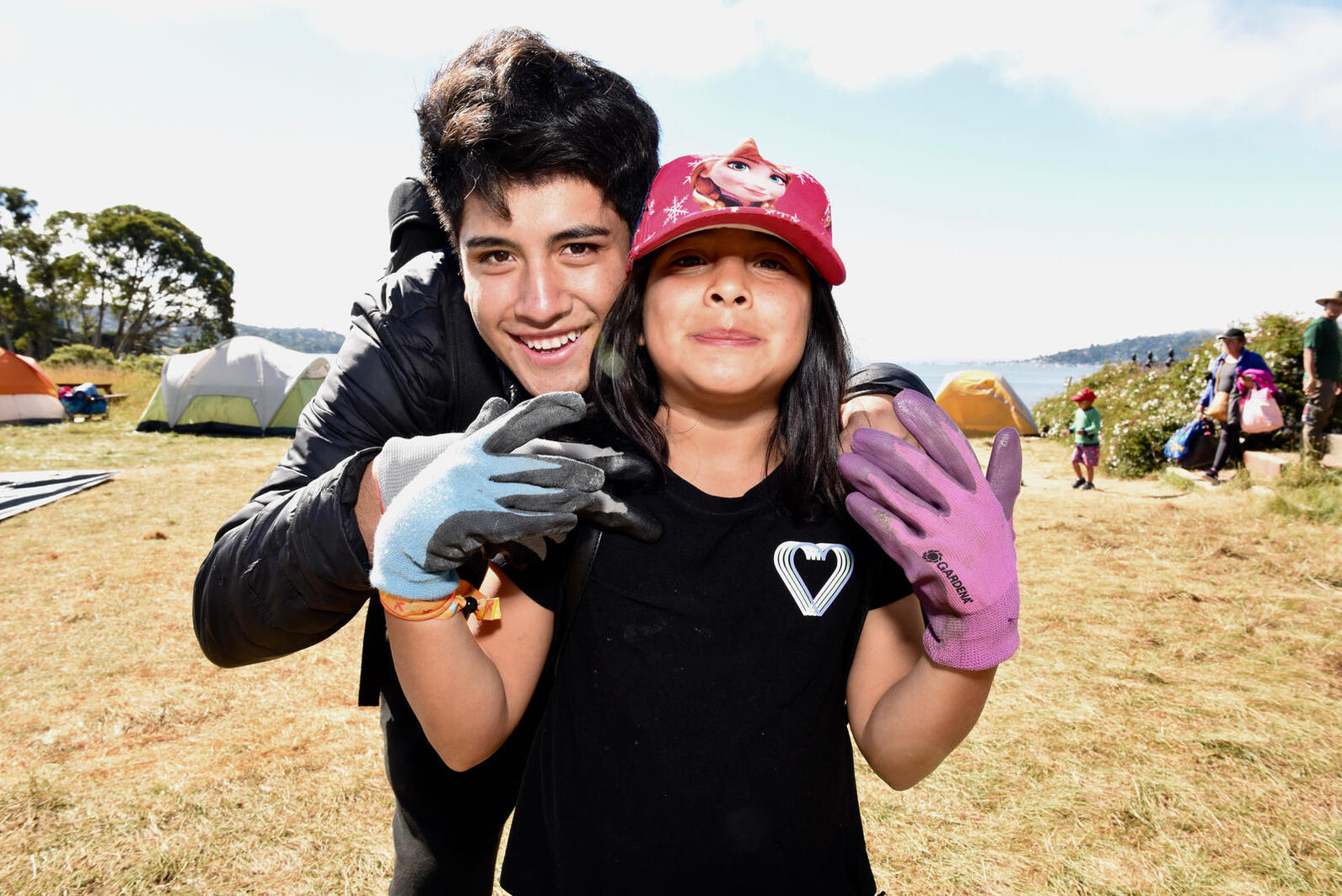
Whether we are in the field counting birds, engaging with youth on a habitat restoration project, or writing a grant report, equity is our daily work. Audubon California's staff in each of our offices, centers, and sanctuaries develop, evaluate, and improve our work programs and products based on principles of inclusion and equity. Here are some examples of this important work throughout the state of California.
Audubon Center at Debs Park – Los Angeles, CA
Debs Park staff launched Greening in Place: Protecting Communities from Displacement, a comprehensive resource for park developers, non-government organizations, local decision-makers, and community advocates to engage in equitable green infrastructure development. It will serve as a useful and impactful tool to advocate for investment and engagement with low-income communities and communities of color that have historically been excluded from and/or harmed by land use and environmental policy decisions.
Richardson Bay Audubon Center & Sanctuary – Tiburon, CA
The Audubon Youth Leaders program centers on improving access to nature for all young people throughout Marin County. This nine-month internship for high school students nurtures and develops leadership skills as well as cultivates a deep conservation ethic. While immersing teens in hikes, kayak trips, and work in the on-site native plant nursery, staff authentically engage them in conversations about the values they bring to the environment. This program cultivates the next generation of conservation stewards and recruits students from alternative education programs and the juvenile justice system.
Starr Ranch Sanctuary – Trabuco Canyon, CA
This sanctuary relies on the dedication of seasonal employees to help with the removal of invasive plants, grassland restoration projects, and songbird monitoring work. Audubon California staff have made it their mission to hire people from all over the United States with a focus on recruiting individuals underrepresented in the conservation field. To date, over 200 young people have worked at Starr Ranch Sanctuary, gaining invaluable professional and personal nature-based experiences.
Kern River Preserve – Weldon, CA
Near a rural and economically disadvantaged community close to the preserve, Audubon California staff are establishing a new public access trail that will be more accessible to schools, families, and visitors. To ensure Native American cultural resources on the property are protected and properly interpreted, we’re in partnership with local tribal leaders.
Working Lands – Throughout the Central Valley
In partnership with environmental justice organizations, Audubon staff reviewed over 30 groundwater plans submitted under the Sustainable Groundwater Management Act. Using an equity lens, we assessed each plan to ensure there was fair weight given to disadvantaged communities and stakeholders as well as adequate planning for clean drinking water, combatting climate change, and protecting the environment.
Field Offices - Sacramento and San Francisco
Audubon California’s finance, development, and leadership teams know that we need to do business differently to elevate diversity and inclusion. To that end, our staff make sure we support women and minority-owned vendors, contractors, and businesses whenever possible. We also support locally owned small businesses for many of our events.
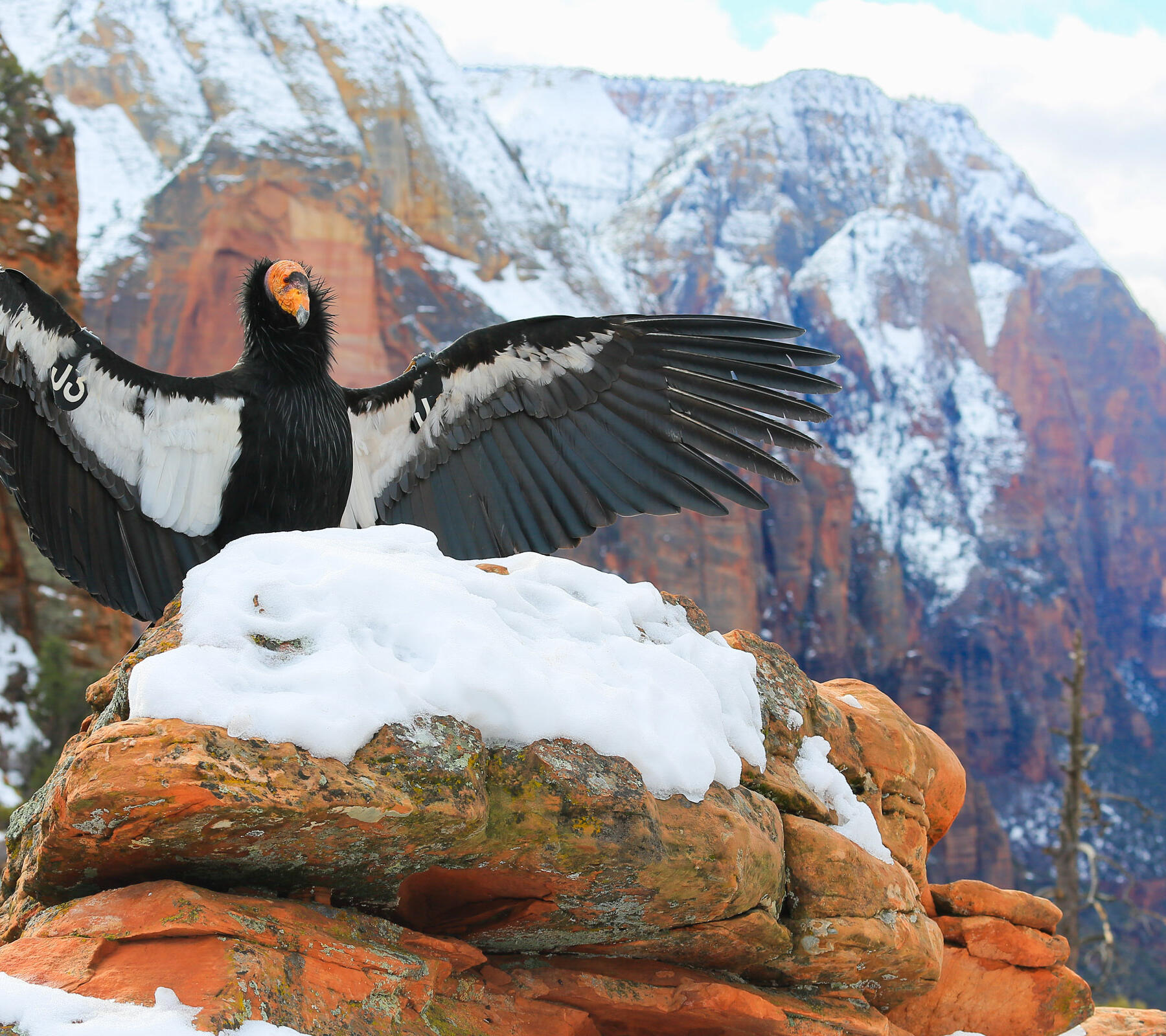

Photo: Madison Roberts
Growing up in the Philippines, Justine Villanueva shares her journey of leaving her homeland and healing her belonging through decolonization, learning to dwell, and connecting to birds.
Viral makeup tutorial, bird drag looks, and special interview with L Y L E, drag queen and Disney Prince.
An anti-displacement guide for green infrastructure development.
We are proud to have so many amazing, talented women at Audubon California.
To celebrate Women’s History Month, we’re introducing you to the incredible women ranchers in California who are enrolled in Audubon’s Conservation Ranching Initiative. We asked questions, and they responded with fun, insightful, and birdy answers.
How listening to birds can rehabilitate a child's ability to pay attention.


Photo: National Audubon Society
Ensure birding is for everybody and every body! This map catalogs the physical accessibility of birding sites and hiking trails, created with Birdability.
The Los Angeles Times's Patt Morrison interviews Tim Krantz, a University of Redlands environmental studies professor, about what's at stake at the Salton Sea. An excerpt:
"If you had a 30-second TV spot to make your pitch for saving the Salton Sea, what would it say?
The sea is not an accident. It's not there in the isolated desert. It affects 1.5 million people who live around it. It's not a local, regional problem; it's much broader. To deal with it retroactively, only after thousands of people have lost their lives, only after property values from Palm Springs to the border have declined, only after the fish and wildlife values, the migratory bird values have been lost — we're facing the dilemma in perpetuity, trying to put Band-Aids on the problem. Or we can spend that money now and maybe get a return on our investment in short order."
Read the whole piece here.
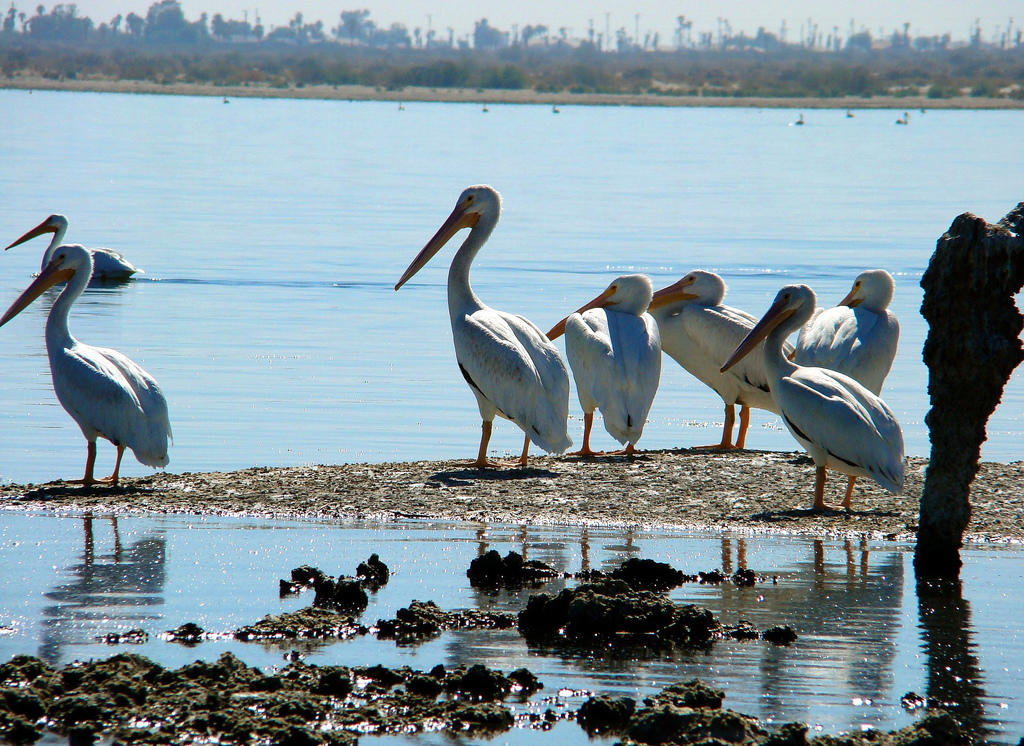
Conservation groups including Audubon California hope that more than $80 million included in the recently-approved state budget will be the first step in a longer, more substantial commitment from the Legislature to addressing the developing environmental crisis at the Salton Sea. The $80.5 million for planning and restoration at the Salton Sea, part of the $167 billion state budget, will ultimately come from Proposition 1 funds approved by voters in 2014.
While the new funding marks the largest amount that the State of California has ever contributed to restoration at the Salton Sea, it is nonetheless only a fraction of the several billion dollars that will be needed to stabilize the situation there.
The funding will help the state pay for the development of a long-term management plan that seeks to address the problems created by reduced water deliveries to California’s largest inland lake. As the Salton Sea shrinks in the coming years, it is expected to have serious ramifications for the more the 400 species of birds that rely on its habitat. Less water will also result in the exposure of hundreds of acres of plays, creating a toxic dust and a serious public health hazard.
Money will also jump-start restoration of habitat along the edge of the lake, creating infrastructure to move water to a number of habitat areas.
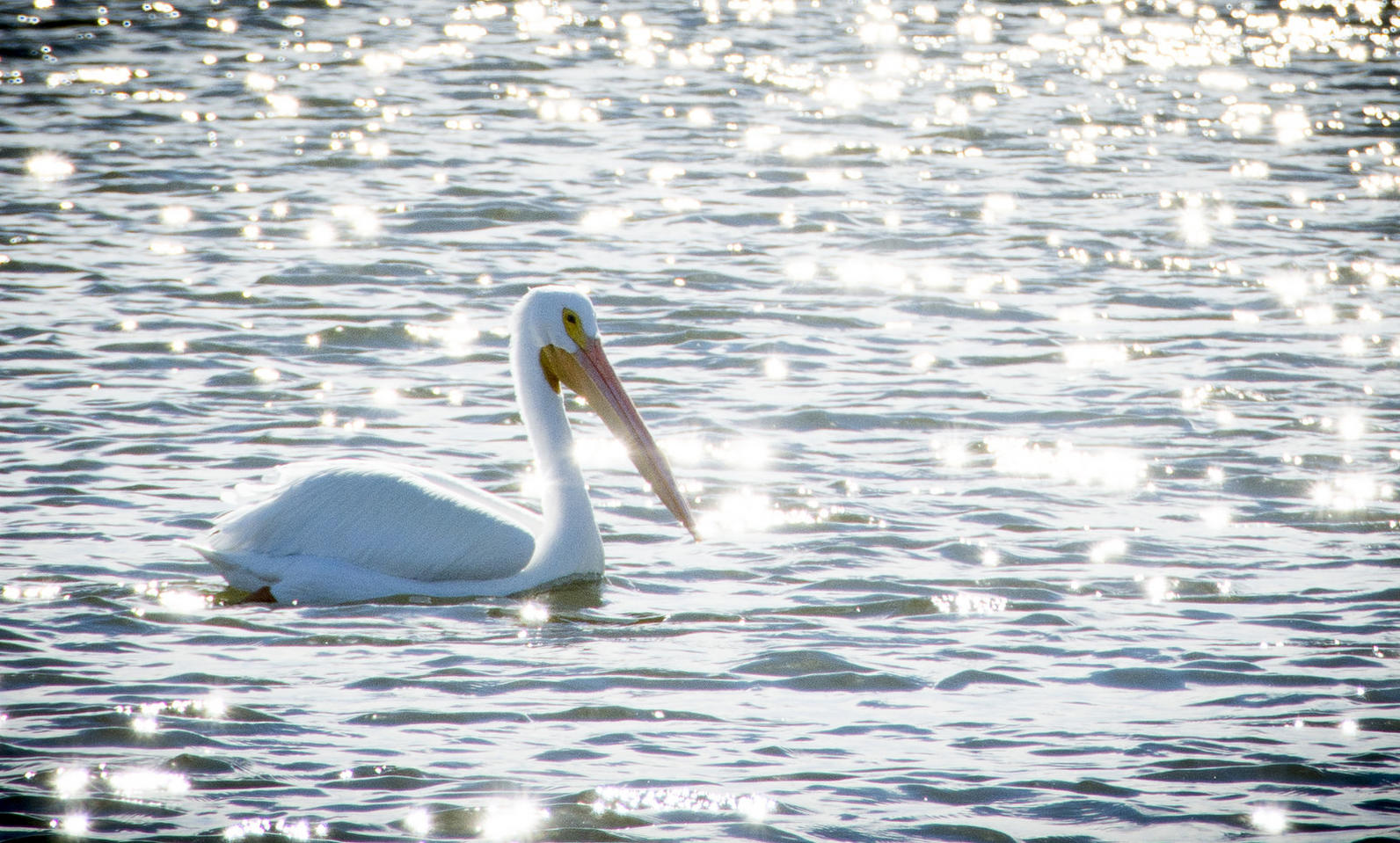
An independent California oversight agency last week called on California Gov. Jerry Brown to declare a state of emergency to resolve the environmental disaster unfolding at the Salton Sea. In a strongly-worded letter, the state’s Little Hoover Commission shared the results of recent hearings, arguing that the Salton Sea should be given as high a priority as high speed rail, the twin tunnels, reduced carbon emissions, and increased renewable energy.
The Commission is responding to the upcoming implementation of water diversions from the Salton Sea that will eventually result in 40 percent less water filling the state’s largest inland lake. This will have a devastating impact on bird habitat and expose huge swaths of lakebed, potentially creating dust that will present a serious public health threat to the 650,000 Imperial County residents nearby.
Audubon California is particularly concerned about the situation at the Salton Sea because of the regions particularly high value to birds. More than 400 species use the Salton Sea, many of which are threatened or endangered species.
“Unlike a wildfire burning out of control or an oil spill blackening beaches, the Salton Sea disaster is slowly unfolding, and has been all but ignored until recently,” the letter reads. “When other disasters destroy California lives and livelihoods, Governors declare a state of emergency. The looming Salton Sea disaster warrants the same level of urgency.”
The commission offered four specific recommendations to get the state’s response to this crisis moving.
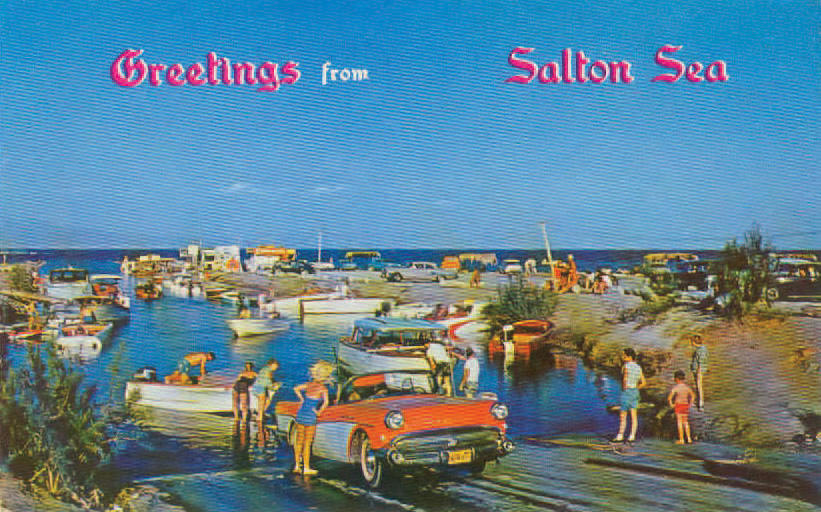
A picture says a thousand words, as the saying goes. The above postcard from the 1950s shows a bustling Salton Sea Marina, a center of fun and recreation.San Bernardino Valley Audubon's Drew Feldman recently visited the exact same location and took the photo below, which shows just how much things have changed over the years.
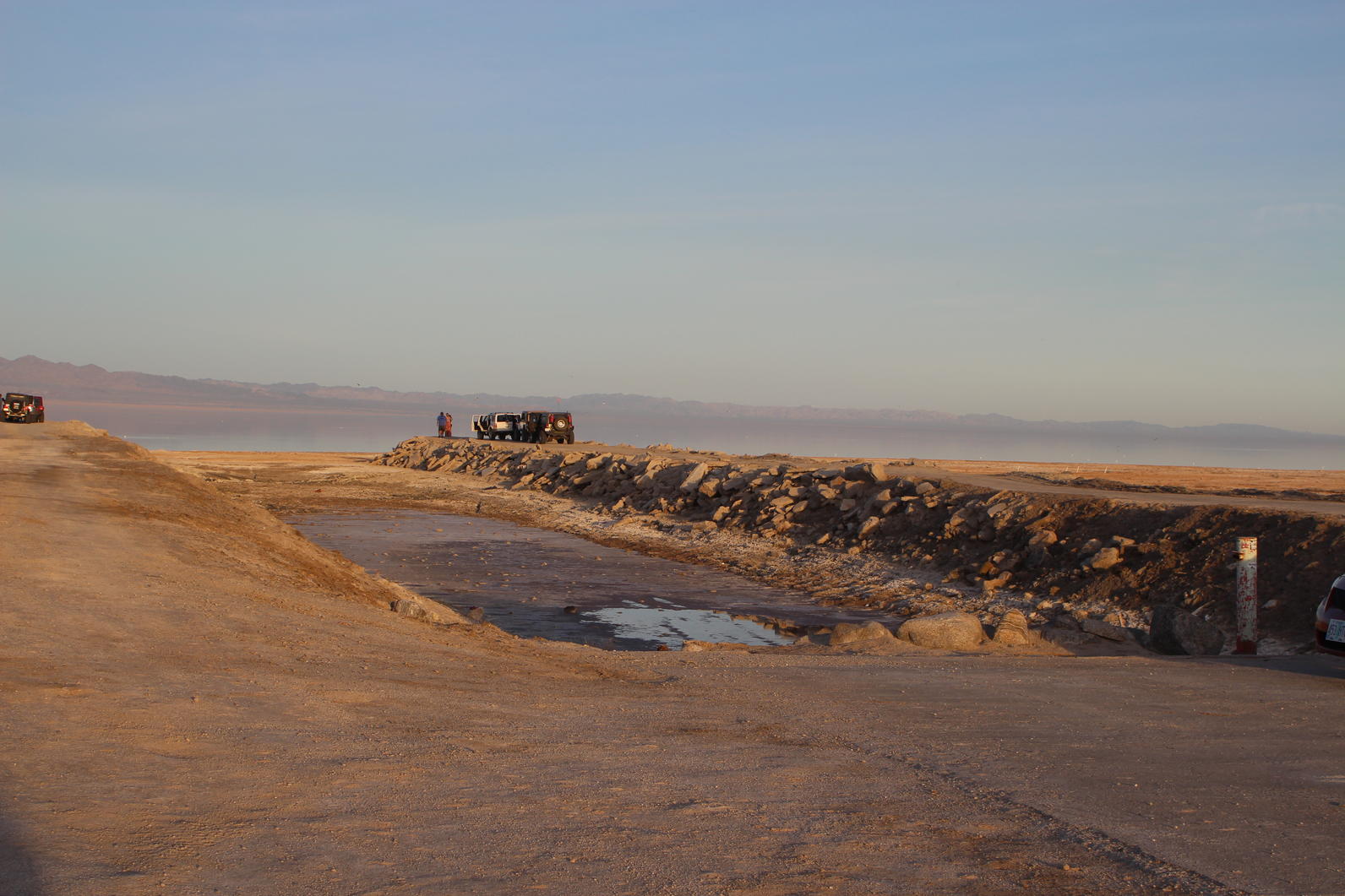
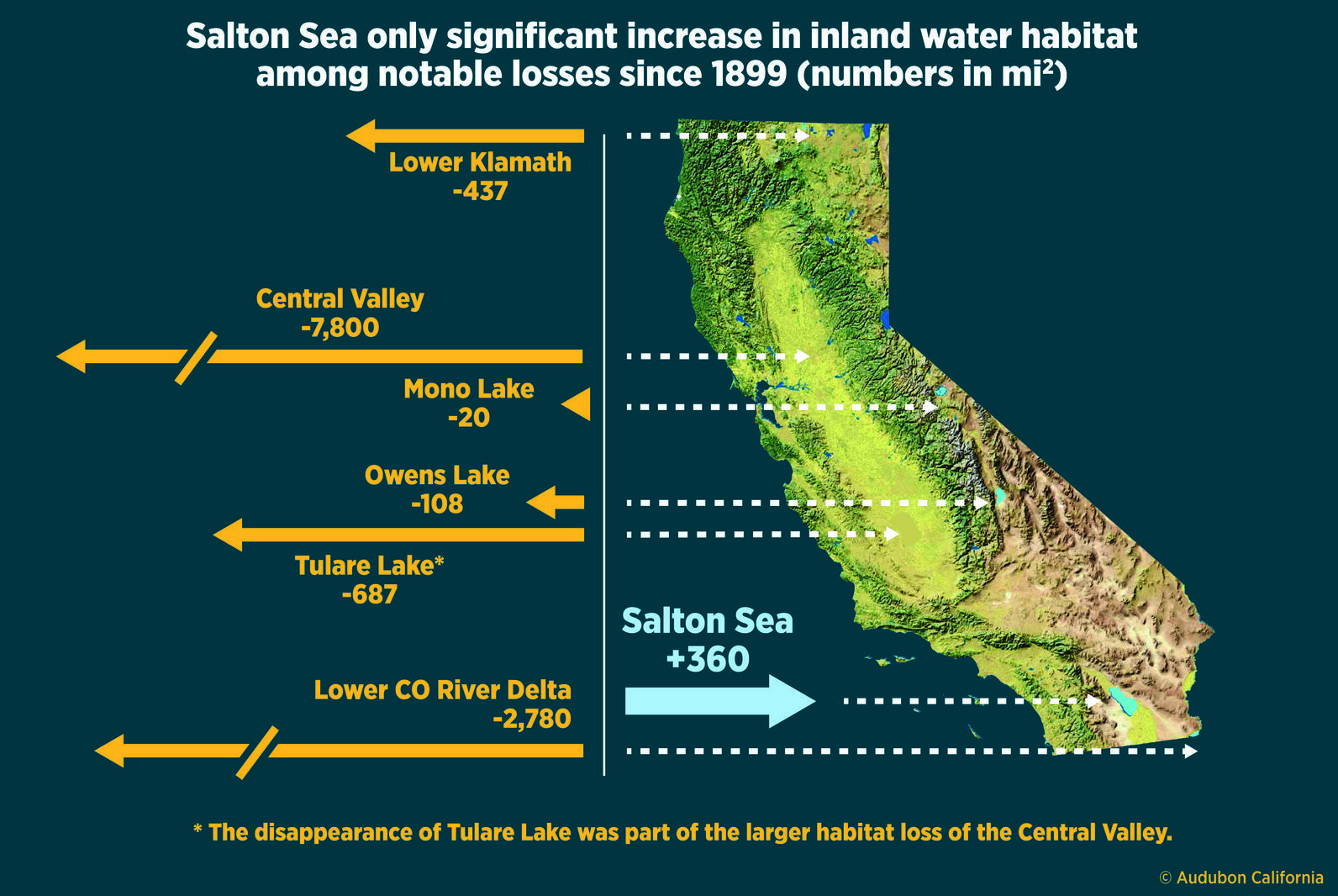
Audubon California Executive Director Brigid McCormack today writes in the Desert Sun that while the narrative around the Salton Sea is often one of environmental decay, the site remains one of the most important places for birds on the Pacific Flyway. She notes that it was created at a time when humans were wiping out natural inland water habitat:
"For birds, the creation of the Salton Sea came at just the right time – just as humans began wiping out wetland habitat throughout California.
Two years before dredging began on the Imperial Valley canal, the last remnants of Tulare Lake disappeared. Once the largest freshwater lake in the West, Tulare Lake was nearly twice the size of the Salton Sea, and anchored more than five million acres of Central Valley wetlands, 95 percent of which are now gone.
In 1906, the federal government began work on the Klamath Project, which eventually eliminated 437 square miles (80 percent) of wetland habitat in the Klamath Basin along the California/Oregon border.
Just a few years later, the Los Angeles Department of Water and Power began diverting water from the 108-square-mile Owens Lake, where Native Americans recalled a sky blackened with migratory birds, and naturalist Joseph Grinnell found great numbers of avocets, phalaropes and ducks. By 1926, Owens Lake was gone.

Fascinating piece today in the Los Angeles Times about the growing concern over declining water levels in Lake Mead that, if they continue to fall, could trigger substantial water cuts in Arizona and New Mexico. Because of this pressure is growing on California users to reduce its use of Colorado River Water. You might recall recently that the Imperial Irrigation District, one of the primary users of water from the Colorado River, has said that will be uncomfortable with any agreement regarding Colorado River water unless the major issues of habitat conservation and dust mitigation at the Salton Sea are resolved.
"All the parties are under pressure to reach an agreement by the end of this year, before the current administration leaves office and the process has to start anew with new federal overseers. But the interstate complexities may pale in comparison with the difficulty of working out agreements among water users within each state. California's Imperial Irrigation District, which has the largest entitlement of Colorado River water, has balked at any agreement to preserve water levels in Lake Mead without a parallel agreement to preserve the Salton Sea. That huge inland pond has suffered as a result of earlier multi-billion-dollar deals by which the Imperial Irrigation District transferred water to San Diego, the MWD and other users.
The shrinkage of the sea already is an environmental and public health disaster. Withholding more water in Lake Mead without a rescue plan would be unacceptable, Imperial Irrigation District General Manager Kevin Kelley said recently. "The Salton Sea has always been the elephant in the room in these talks," he told the Desert Sun newspaper."
Our newsletter is fun way to get our latest stories and important conservation updates from across the state.
Help secure the future for birds at risk from climate change, habitat loss and other threats. Your support will power our science, education, advocacy and on-the-ground conservation efforts.
California is a global biodiversity hotspots, with one of the greatest concentrations of living species on Earth.